| Mniaceae | |
|---|---|
 | |
| Plagiomnium insigne | |
| Scientific classification | |
| Kingdom: | Plantae |
| Division: | Bryophyta |
| Class: | Bryopsida |
| Subclass: | Bryidae |
| Order: | Bryales |
| Family: | Mniaceae Schwägr. |
| Genera | |
See text | |
| Mniaceae | |
|---|---|
 | |
| Plagiomnium insigne | |
| Scientific classification | |
| Kingdom: | Plantae |
| Division: | Bryophyta |
| Class: | Bryopsida |
| Subclass: | Bryidae |
| Order: | Bryales |
| Family: | Mniaceae Schwägr. |
| Genera | |
See text | |
The family Mniaceae includes the following genera: [4] [3]
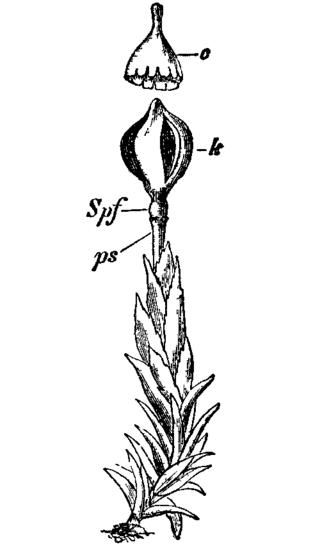
Andreaeaceae is a family of mosses which includes two genera, Andreaea, containing about 100 species, and the genus Acroschisma. The Andreaeaceae prefer rocky habitats ranging from tropical to arctic climates, on which they form tufted colonies, typically with reddish to blackish shoots. The capsules lack the peristome mechanism and dehisce longitudinally to release the spores, resulting in a paper-lantern appearance.
Andreaeobryum, the Mossy Cowl Moss, is a genus of moss with a single species Andreaeobryum macrosporum, endemic to Alaska and western Canada. The genus is placed as a separate family, order and class among the mosses.
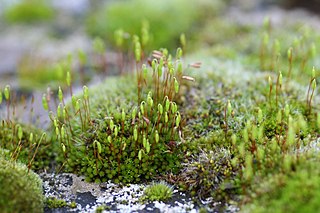
Bryales is an order of mosses.
Gigaspermaceae are a family of mosses in the monotypic order Gigaspermales. The order is placed in subclass Gigaspermidae of the class Bryopsida. They were previously placed in subclass Funariidae.

Encalyptales is an order of mosses in subclass Funariidae. It contains a single family.

Timmia is a genus of moss. It is the only genus in the family Timmiaceae and order Timmiales. The genus is named in honor of the 18th-century German botanist Joachim Christian Timm.

Bryaceae is a family of mosses.
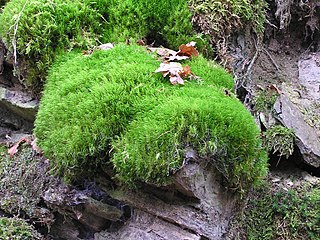
Dicranaceae is a family of haplolepideous mosses (Dicranidae) in class Bryopsida. Species within this family are dioicous. Genera in this family include Dicranum, Dicranoloma, and Mitrobryum.

Calliergon cordifolium is a species of moss in the Calliergonaceae family, commonly known as the calliergon moss or heart-leaved spearmoss. The species is abundant in the right habitat, and grows in marshes and wet woodland, especially woodland of alder (Alnus) or willow (Salix), as well as around streams, ditches and pools. The species grows in tufts among other moss species. Calliergon cordifolium requires a wet environment to grow, and often grows completely submerged in water. It typically prefers lowland, but has been recorded as high as 910 metres (1,000 yd) above sea level in Inverness, Scotland. The species has a circumpolar Boreo-temperate distribution. It is found throughout Europe. It has been recorded in north and central Asia, as well as Turkey and Japan, throughout North America and in New Zealand.

Ditrichum is a genus of haplolepideous mosses (Dicranidae) in the family Ditrichaceae.
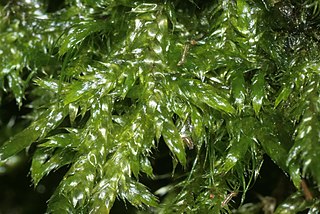
Sematophyllaceae is a family of mosses, known commonly as signal mosses. They grow on rocks in wet or humid places. and are found nearly worldwide, especially in tropical and temperate regions. There are about 150 species, which form yellow to yellow-green mats with reddish stems.
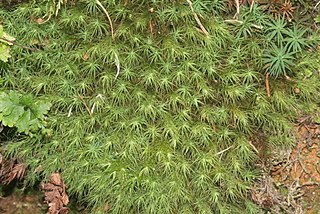
Bartramiales is an order of moss.

Distichium is a genus of haplolepideous mosses (Dicranidae) in the monotypic family Distichiaceae.
Catoscopium is a genus of haplolepidous mosses (Dicranidae) in the monotypic family Catoscopiaceae .
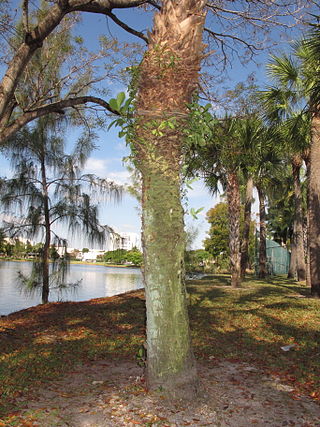
Octoblepharum is a genus of haplolepideous mosses (Dicranidae) in the monotypic family Octoblepharaceae . The genus Octoblepharum was previously placed in family Calymperaceae.
Gigaspermum is a genus of moss in the family Gigaspermaceae. It contains four species.
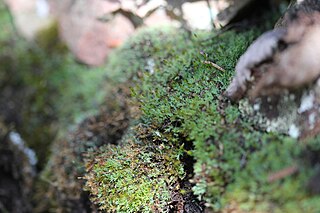
Saelania is a genus of mosses in the monotypic family Saelaniaceae in subclass Dicranidae. The genus was previously placed in family Ditrichaceae. Saelania is named after Finnish botanist Thiodolf Saelan.

Pleurophascum is a genus of haplolepideous mosses (Dicranidae) in the monotypic family Pleurophascaceae in the order Pottiales.
Mittenia is a genus of haplolepideous mosses (Dicranidae) with a single species, Mittenia plumula, which is the sole representative of the family Mitteniaceae in the order Pottiales.
Helodium is a genus of mosses belonging to the family Helodiaceae.